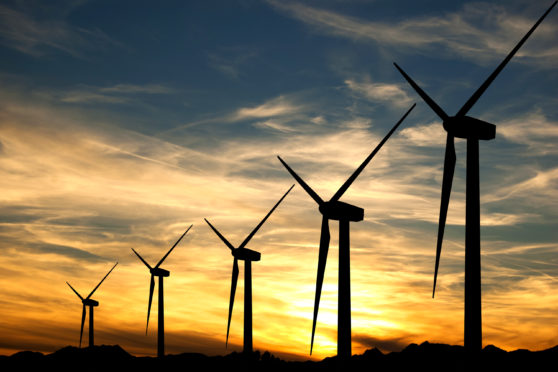The political appetite for renewable energy and on-shore wind farms is strong in Scotland, and renewable energy developers have on-shore wind farm acquisition back in their sights.
Over 70% of the electricity generated in Scotland comes from renewable sources, and two thirds of that is derived from wind.
On-shore wind makes up almost half the pre-operational renewable projects in the pipeline and developers are looking for more sites. Scotland is ideally suited to renewable energy, and on-shore wind in particular, due to the favourable geographic and political landscapes.
Both landowners and occupiers can benefit from the renewed interest from energy developers.
Developers are interested in sites that have strong wind speeds, that lie outside areas with high value environmental designations (national parks, Ramsar sites, etc) and are not dotted with residential properties.
They are looking for land areas that are big enough to site at least five large wind turbines with tip heights at or above 100 metres, to achieve an installed capacity of at least 20 mega watts (MW). Typically, such an area would be 400 acres or more.
The other critical success criteria for renewables companies are grid capacity and access to the site.
Grid capacity is determined by the statutory provider in the area, either Scottish Power or SSE. This has been a restricting factor for many areas which have wind energy potential. However recent infrastructure works around the country have seen the capacity improving, with new pylon lines being raised or old lines being upgraded.
Access to the potential site for development traffic is essential.
Wind turbines are getting bigger, so the limiting factor of a site is being able to manoeuvre them into sites, e.g. getting the turbine blades around corners, or the construction cranes over bridges. We are seeing more and more ingenious ways of getting such traffic to site, so these challenges can often be overcome.
Current market payments from developers to land owners and secure agricultural tenants for hosting on-shore wind farm assets are no longer at the dizzy heights because new sites are operating in a subsidy-free market, but they remain very attractive and can provide a significant diversified income to a farm business. Payments are not just limited to annual rental for the wind turbines, nor to the land holding upon which the wind farm is built.
In addition to annual rental for wind turbines, the land owner/occupier hosting the wind farm can also benefit from disturbance payments during the construction period, payment for rock and other aggregate won from site, rent from substations or anemometers and more.
Neighbours and nearby properties can benefit financially by enabling the grid connection (accepting the power line across their land) or agreeing to sell or rent land to widen the road that enables a turbine to get around a corner, or for a bridge to be strengthened, or a new one to be constructed.
D&R has seen the list of interested developers growing in the last six months. Landowners/occupiers who progressed discussions with developers that faltered when the subsidy regime came to an end are being advised to get these sites back in front of the list of developers prospecting for new sites.
The key to a successful deal and maximising value is to engage agents and solicitors who understand these opportunities and the current market to negotiate Heads of Terms, option and lease agreements to your advantage.
You should also include your accountant in reviewing business structures and tax planning, enabling you to keep as much of the income and capital that can materialise from such deals.
Murray Philp is a surveyor with Davidson & Robertson, Forfar.










